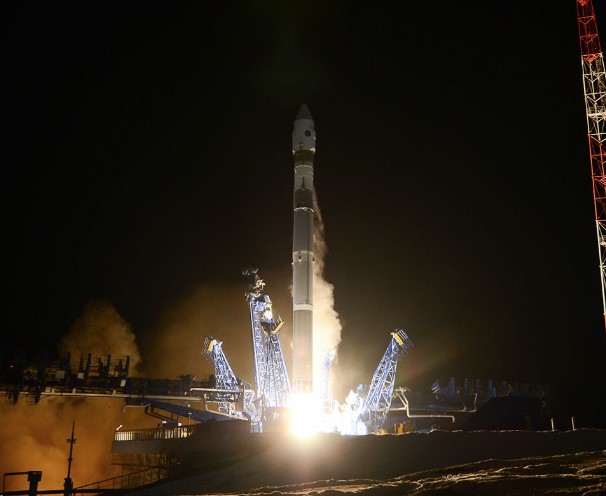Russian Satellites Move in Unusual Ways
In the vast emptiness of space, strange things can happen without most people noticing. Earlier this year, three Russian satellites—Kosmos 2581, 2582, and 2583—were launched into orbit aboard a Soyuz-2.1V rocket from the Plesetsk Cosmodrome on February 2. What made them unusual was not just their launch, but how they behaved after reaching space.
These satellites did not simply stay in one place. Instead, they started maneuvering in ways that caught the attention of space experts. They moved close to other satellites about 500 miles (900 km) above Earth’s surface, a behavior that raised concerns among international observers. The purpose of these movements was not clear, but many found them suspicious.
Astrophysicist Jonathan McDowell, along with other satellite trackers, noticed these strange activities in real-time. Then, something even more unusual happened in March. On March 18, a new object was detected in space. This object, cataloged by the U.S. Space Force, appeared to have been released by Kosmos 2581. No official statement from Russia explained what the object was or why it was deployed.
Suspicious Space Activities Observed
The new object’s purpose remains unknown, but experts have some ideas. The Pentagon suggested that Russia could be testing how to surround and isolate a satellite, a possible preparation for military actions in space. Such maneuvers could be used to capture or disable another satellite in the future.
Data from Orbital Focus, a space tracking service, confirmed that Kosmos 2583 adjusted its trajectory two weeks ago. Meanwhile, Kosmos 2581 and 2582 moved closer together in a controlled manner. These movements were not random. Instead, they appeared to be part of a planned exercise.
The released object could serve different purposes. It might be testing technology for satellite docking, a skill useful for maintenance or repairs in space. It could also be practicing precise flying in formation with other satellites. Since Russia has not shared any details, there is no way to know for sure.
Some experts believe that the object is not accidental debris. When a satellite breaks apart by accident, it usually creates many fragments. However, in this case, only one object was released, and it appeared to move in a controlled manner. This suggests it was intentionally placed in space.
A senior U.S. defense official called these activities “suspicious.” According to the official, multiple Russian satellites worked together to surround and isolate another spacecraft, making it look like they were practicing for a real-world confrontation in orbit.
Space Becomes a New Battlefield
The Kosmos satellite program has a long history. It began in 1962 during the Cold War, and its missions have ranged from scientific experiments to military surveillance and anti-satellite weapon tests. Russia has always kept details about its Kosmos satellites secret, which adds to the concern.
Russia is not the only country deploying satellite trios. The United States has the Naval Ocean Surveillance System, and China uses its Yaogan satellites in a similar way. These satellites can track ships, intercept signals, and even monitor other satellites.
According to Brian Weeden, an expert at the Secure World Foundation, the Kosmos satellites likely have small thrusters for precise movements. They might also have high-resolution cameras and electronic sensors. These tools could help them closely observe or even interfere with other satellites in space.
This event is not the first time Russian satellites have acted strangely. In 2019, Kosmos 2542 followed a U.S. spy satellite, USA 245, at close range. This behavior was labeled “unusual and disturbing” by General John “Jay” Raymond, the former Chief of Space Operations for the U.S. Space Force.
These latest Russian maneuvers come at a time of heightened global tensions. Space is becoming a highly contested area, with countries using satellites not just for communication and exploration but also for military and intelligence purposes.
Satellites are crucial for modern life. They provide GPS navigation, enable communication, predict the weather, and help with military operations. If an enemy disables or destroys key satellites, it could cause chaos. Military experts have warned that a successful space attack could blind an opposing force, making it harder for them to coordinate and respond in a crisis.
For now, experts around the world continue to track Kosmos 2581, 2582, 2583, and the mysterious object they released. Whether this event signals new developments in space warfare or is simply a test of new Russian technology remains unclear. However, what is certain is that every movement in space is being watched more closely than ever before.




